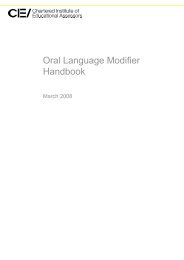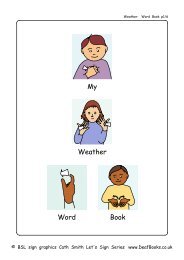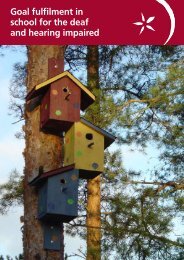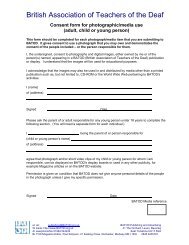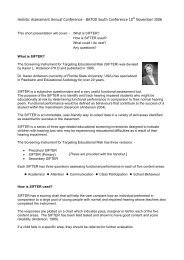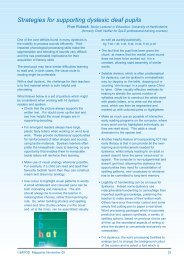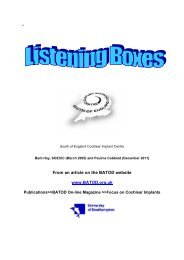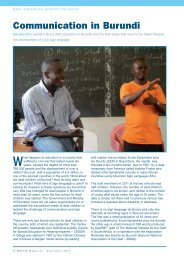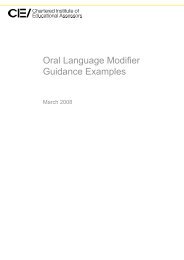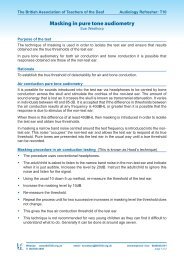Checking behind-the-ear (BTE) hearing aids - batod
Checking behind-the-ear (BTE) hearing aids - batod
Checking behind-the-ear (BTE) hearing aids - batod
Create successful ePaper yourself
Turn your PDF publications into a flip-book with our unique Google optimized e-Paper software.
The British Association of Teachers of <strong>the</strong> Deaf<br />
Audiology Refresher: C1<br />
<strong>Checking</strong> <strong>behind</strong>-<strong>the</strong>-<strong>ear</strong> (<strong>BTE</strong>) h<strong>ear</strong>ing <strong>aids</strong><br />
Margaret Glasgow<br />
H<strong>ear</strong>ing aid users who have significant h<strong>ear</strong>ing losses need appropriate, working h<strong>ear</strong>ing<br />
<strong>aids</strong>, which are worn all <strong>the</strong> time. It is <strong>the</strong>refore important that <strong>the</strong> h<strong>ear</strong>ing <strong>aids</strong> are checked<br />
regularly whilst <strong>the</strong> child is young or is an inexperienced user and cannot alert anyone to <strong>the</strong><br />
fact that <strong>the</strong>y are not working satisfactorily.<br />
H<strong>ear</strong>ing Aid<br />
A h<strong>ear</strong>ing aid consists of three parts:<br />
Earmould and tubing<br />
Hook<br />
H<strong>ear</strong>ing aid (plus<br />
audio shoe if used<br />
with a radio aid)<br />
If one of <strong>the</strong>se parts is not working <strong>the</strong> whole system breaks down. When <strong>the</strong> <strong>ear</strong>mould<br />
becomes too small or worn and <strong>the</strong> h<strong>ear</strong>ing aid starts to whistle, a new <strong>ear</strong>mould impression<br />
should be taken immediately. The situation will not get better (only worse) and it may take<br />
two or more weeks to get new <strong>ear</strong>moulds. Turning <strong>the</strong> h<strong>ear</strong>ing aid down to stop <strong>the</strong> whistling<br />
means <strong>the</strong> child/pupil cannot h<strong>ear</strong> sufficiently well to discriminate speech correctly.<br />
Look at......<br />
1 <strong>ear</strong>mould and tubing<br />
a) Is <strong>ear</strong>mould discoloured, rough, torn, chipped<br />
If so: make an appointment for impressions for new <strong>ear</strong>moulds.<br />
b) Is <strong>ear</strong>mould blocked with wax or secretion<br />
Is <strong>ear</strong>mould dirty<br />
If so: wash in hot, soapy water, rinse and dry.<br />
Cl<strong>ear</strong> droplets of water in <strong>the</strong> tubing with <strong>ear</strong>mould puffer.<br />
c) Is <strong>the</strong> tubing split, squashed, twisted or hard<br />
If so: re-tube <strong>ear</strong>mould<br />
d) Is <strong>the</strong>re condensation in <strong>the</strong> tubing (You may notice little drops of water in <strong>the</strong> tubing<br />
when <strong>the</strong> child becomes hot after playing or on a warm day)<br />
If so: cl<strong>ear</strong> droplets of water with <strong>ear</strong>mould puffer.<br />
Website: www.BATOD.org.uk email: secretary@BATOD.org.uk Answerphone / fax: 08456435181<br />
© BATOD 2009 page 1 of 2
The British Association of Teachers of <strong>the</strong> Deaf<br />
Audiology Refresher: C1<br />
2 hook<br />
a) Is <strong>the</strong> hook split, broken etc<br />
If so: take/send h<strong>ear</strong>ing aid to <strong>the</strong> hospital so that <strong>the</strong> correct hook can be<br />
replaced (ensure that it is <strong>the</strong> same number eg PD1000 and size<br />
of hook eg mini).<br />
b) Is <strong>the</strong>re condensation in <strong>the</strong> hook<br />
If so: cl<strong>ear</strong> droplets of water by removing <strong>the</strong> hook and blowing through with <strong>the</strong><br />
<strong>ear</strong>mould puffer.<br />
!!!!!! BEWARE !!!!!!<br />
There may be what looks like small pieces of tissue in <strong>the</strong> hook.<br />
These are filters.<br />
DO NOT REMOVE<br />
3 h<strong>ear</strong>ing aid<br />
a) Is casing damaged<br />
b) Is battery compartment tight<br />
c) Is <strong>the</strong> on/off switch broken or jammed<br />
d) Is <strong>the</strong> microphone blocked<br />
If so: Take <strong>the</strong> h<strong>ear</strong>ing aid to <strong>the</strong> hospital and if it needs repairing get a loan aid.<br />
Ensure that <strong>the</strong> make, model, hook and settings are <strong>the</strong> same as <strong>the</strong><br />
original h<strong>ear</strong>ing aid.<br />
Listen to......<br />
a) Turn h<strong>ear</strong>ing aid on and turn <strong>the</strong> volume control to maximum. The h<strong>ear</strong>ing aid should<br />
whistle.<br />
This information indicates that <strong>the</strong> battery is working – it does not give information<br />
about <strong>the</strong> quality of sound h<strong>ear</strong>d.<br />
No whistle Check that <strong>the</strong>re is a battery; that it is fully charged; and <strong>the</strong> right way<br />
round in <strong>the</strong> compartment.<br />
b) Listen to <strong>the</strong> h<strong>ear</strong>ing aid through a stetoclip (with an attenuator for high powered <strong>aids</strong>).<br />
Switch h<strong>ear</strong>ing aid on. Turn volume up slowly from off and <strong>the</strong>n back down to child’s<br />
listening level. Squeeze h<strong>ear</strong>ing aid to make sure <strong>the</strong>re is not an intermittent fault or<br />
distortion.<br />
IS SPEECH CLEAR<br />
If not: Take/send h<strong>ear</strong>ing aid to <strong>the</strong> hospital and ask for a loan aid as above.<br />
CHILDREN WHO WEAR TWO HEARING AIDS SHOULD ALWAYS HAVE TWO.<br />
Website: www.BATOD.org.uk email: secretary@BATOD.org.uk Answerphone / fax: 08456435181<br />
© BATOD 2009 page 2 of 2



